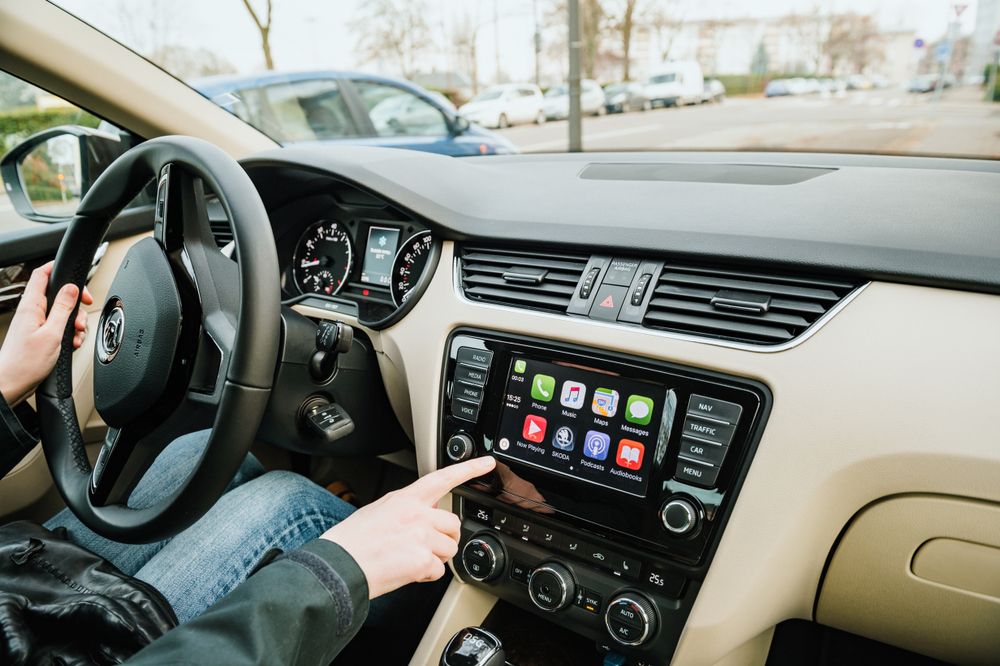In the realm of automotive infotainment systems, Android Auto and Apple Car Play have emerged as frontrunners, revolutionizing how drivers interact with their vehicles and smartphones. Both platforms aim to enhance driving safety and convenience by integrating smartphone capabilities into the car's dashboard, enabling hands-free calls, music streaming, message sending, and navigation. This comparison delves into the strengths and weaknesses of each system to ascertain which one might suit you best.

Exploring Android Auto's Features and Limitations
Developed by Google, Android Auto caters to users of Android devices. Below are the notable advantages and drawbacks of Android Auto:
Advantages:
- Broad Compatibility: Android Auto works with numerous Android smartphones, requiring Android 5.0 or later, making it highly accessible.
- Google Assistant: It incorporates Google Assistant for voice commands, facilitating hands-free control over phones and entertainment systems.
- Google Maps: Known for its precise navigation, Google Maps is integrated into Android Auto, offering real-time directions and traffic updates.
- Third-party App Support: It accommodates a variety of third-party apps, including Spotify, WhatsApp, and more, expanding its functionality.
- Wireless Connectivity: The platform supports wireless connections, eliminating the need for USB cables.
Drawbacks:
- Selective Car Compatibility: Not all car models support Android Auto, with older vehicles possibly requiring updates.
- Limited App Range: Despite supporting numerous apps, its selection is slightly more restricted than Apple CarPlay's.
- Connectivity Glitches: Users have reported occasional connectivity issues, though these are diminishing as the platform evolves.
Assessing Apple CarPlay's Strengths and Weaknesses
Apple's counterpart, Apple CarPlay, is tailored for iPhone users, offering the following pros and cons:
Advantages:
- Seamless iOS Integration: Designed for iOS, it provides an intuitive interface that iPhone users will find familiar.
- Siri Compatibility: Siri integration enables voice-command functionalities for effortless control over the phone and entertainment system.
- Extensive App Support: CarPlay supports a broad spectrum of apps, covering music, messaging, and more.
- Wireless Capability: It also offers wireless connectivity for a cable-free experience.
Drawbacks:
- Model Compatibility Issues: Like Android Auto, Apple CarPlay isn't universally supported across all car models, with older vehicles possibly needing updates.
- iPhone Requirement: CarPlay is exclusive to iPhone users, limiting its availability to those within Apple's ecosystem.
Which System Reigns Supreme?
The choice between Android Auto and Apple CarPlay boils down to personal preference and the devices you use. Here's a quick guide:
- For Android Users: Android Auto is the logical choice, offering extensive compatibility and the convenience of Google Maps and Google Assistant.
- For iPhone Users: Apple CarPlay is the go-to, with its seamless iOS integration and Siri functionality, though it demands an iPhone for use.
Final Thoughts
Before purchasing a new vehicle, consider which infotainment system it supports. While some manufacturers favor one platform over the other, the most suitable system for you hinges on your specific needs, device preferences, and the vehicle you choose. Both Android Auto and Apple CarPlay deliver robust feature sets, ensuring whichever you pick, you'll enjoy a safer, more connected driving experience.
Read More...